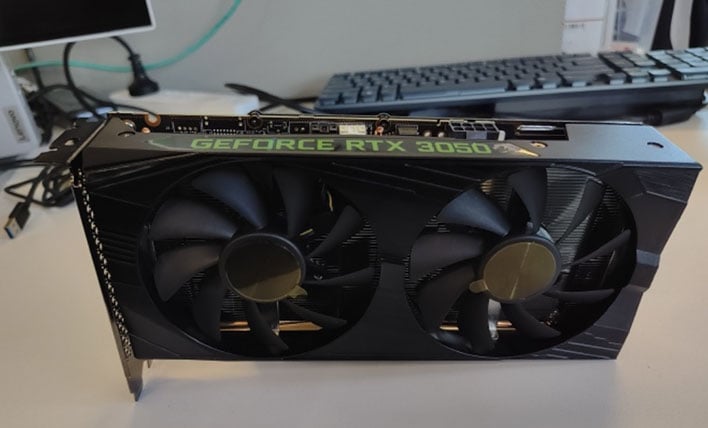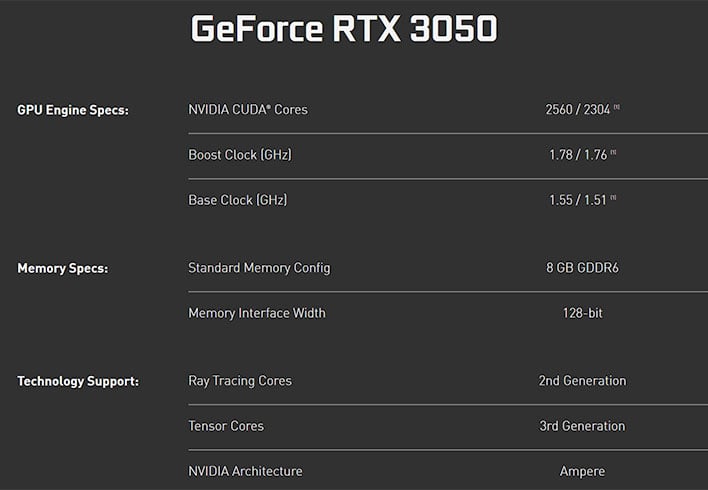NVIDIA Allegedly Gimps OEM Version Of Its Entry Level GeForce RTX 3050

NVIDIA partners have started to make GeForce RTX 3050 graphics cards with trimmed down specs available in pre-built PCs. This OEM variant has both fewer CUDA cores, as well as slightly scaled back GPU base/boost clocks. Otherwise, the OEM RTX 3050 is the same as the PC DIY discrete graphics card you can buy at most electronics retailers.
In the top image, you can see a photo of what is purported to be an OEM GeForce RTX 3050 with the slightly reduced specs. It was apparently pulled out of a pre-built PC in China. Outwardly, it all looks pretty normal.

Coinciding with the Chinese social media post today, we notice that NVIDIA has updated its RTX 3050 desktop product page to reflect the changes made to the OEM version. The CUDA core count is reduced from 2,560 to 2,304 (an 11% cut), the GPU boost clock has been reduced from 1.78 to 1.76 GHz (1% reduction), and the GPU base clock has been reduced from 1.55 to 1.51 GHz (2.6% reduction). Memory specs, TDP, single 8-pin power connector, and everything else we can see remain as per the non-OEM version of this graphics card.
This isn’t the first time that NVIDIA, or AMD, has released a new version of a graphics card with different specs but with the same name. Even before today, there were two different RTX 3050 models – based upon the GA 106 and GA107 GPUs from NVIDIA. However, they both sported the same core counts and clocks, memory – all identical. With this OEM version, based on the GA106, there are some overt performance impacting specification differences.
In this case, it is likely that NVIDIA had quite a lot of spare GA106 GPU dies left over that didn’t make the grade for the RTX 3060, RTX 3050, or various similarly named mobile GPUs it sells. Rather than sit on a pile of silicon waste, it has been able to qualify a worthwhile quantity with 2,304 working CUDA cores.
In coming months, new and used buyers will have to beware. The new OEM card could be 10 to 15% slower with its reduced cores / clocks. Also, an OEM card might not offer as premium a build as a big-brand product - so the cooler might not offer as good performance, or be as quiet.
Turning to pricing—as an OEM part, this graphics card very probably won’t have consumer ‘MSRP’ pricing but may be unofficially available in Far Eastern electronics malls, hopefully commensurately discounted. Sadly, China’s ITHome, the source publication, didn’t have any information about the manufacturer, build quality, pricing or availability of the new GeForce RTX 3050 OEM.

